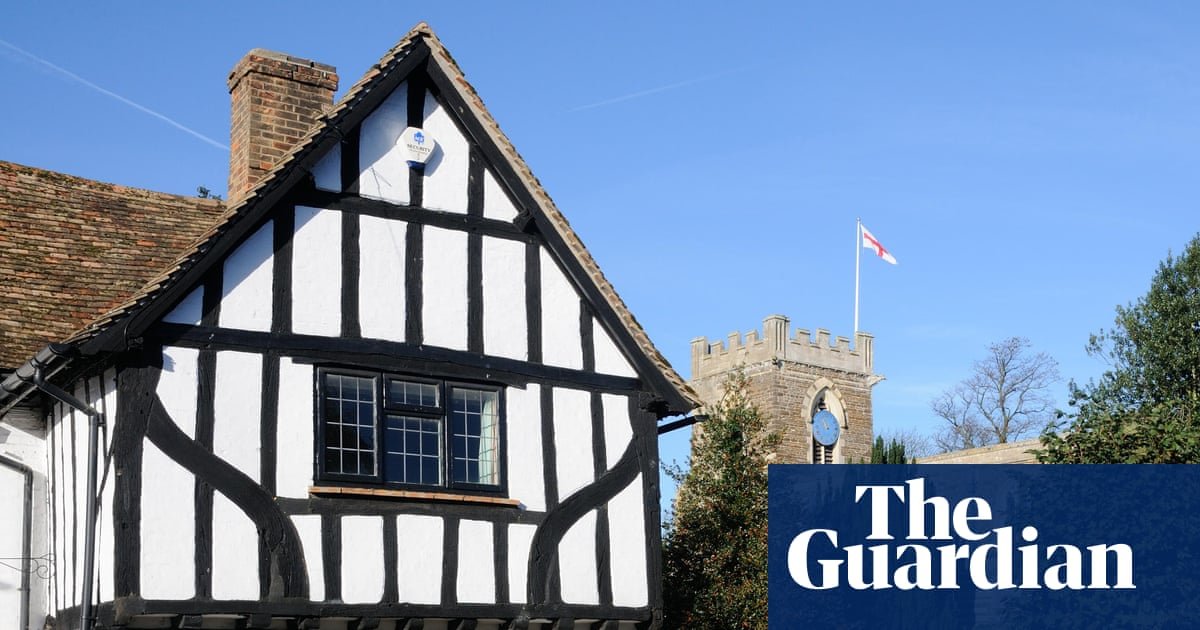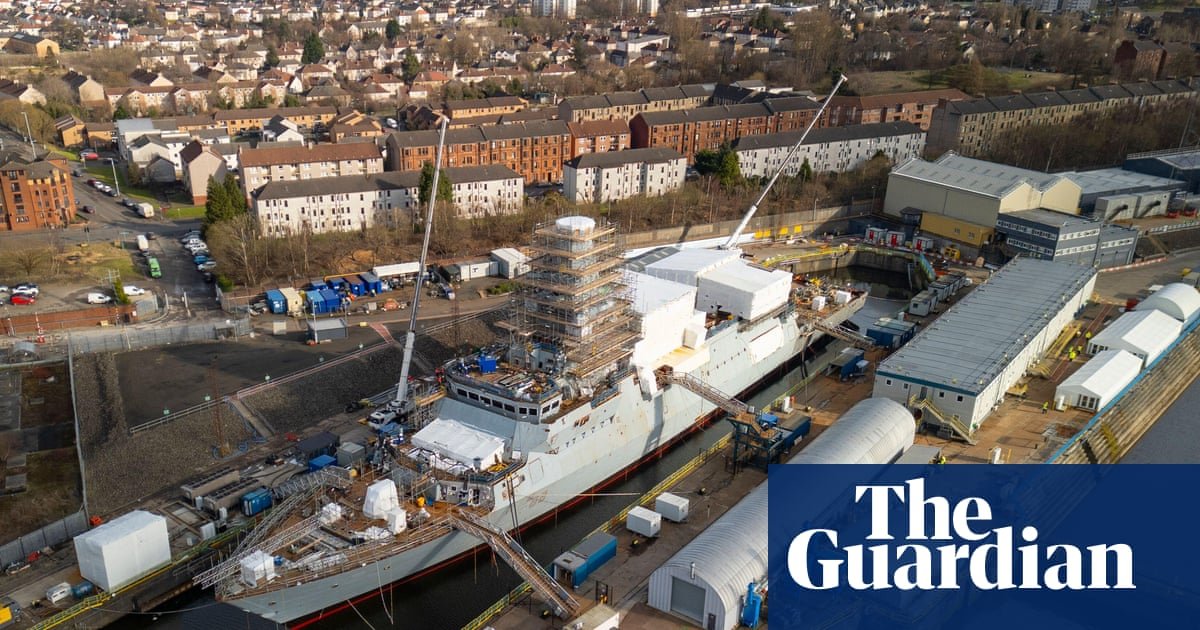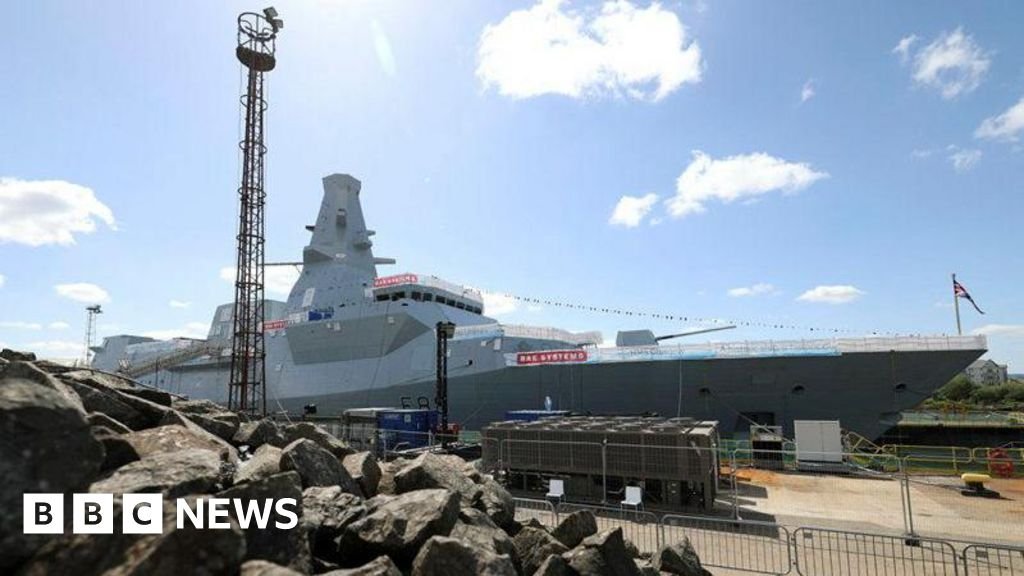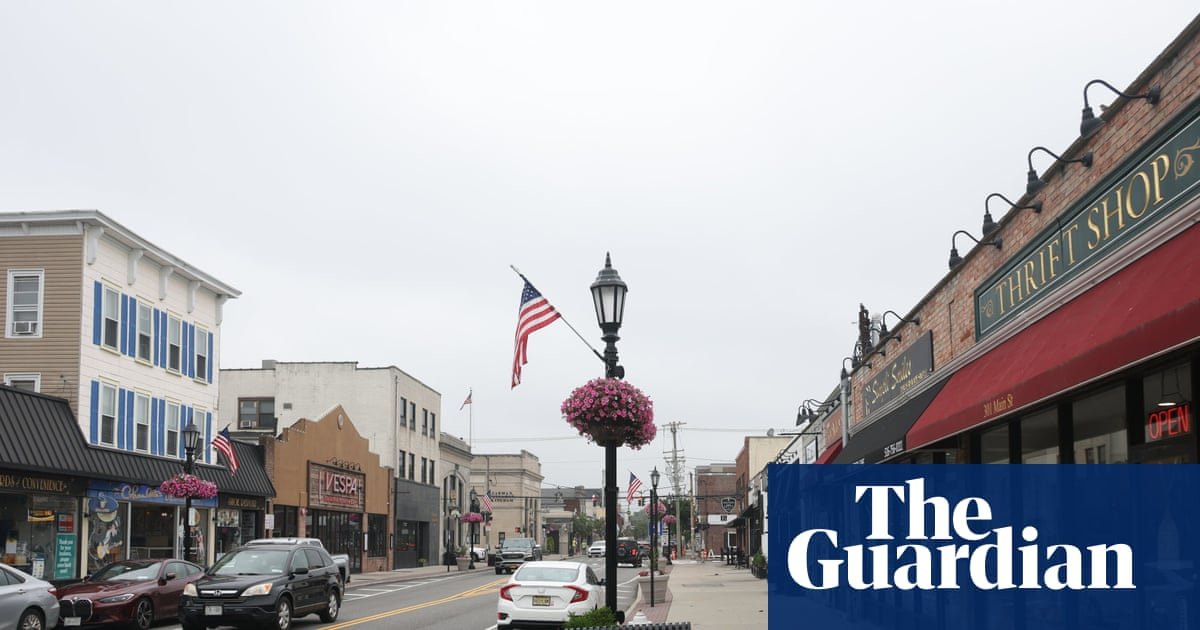Business
‘We have to move’: historic village of Tempsford reels from plan to swell its 600 residents to 350,000 | Housing

This is – they tell you in Tempsford – where Boudicca rallied against the Romans. Where the early English kings fought off the Danes and where Churchill launched secret flights to aid resistance fighters keeping the Nazis at bay.
But the historic earthworks, wheatfields and RAF base of Tempsford may yet prove no match for a chancellor bent on housebuilding and growth, armed with thinktank reports and a 10-year infrastructure strategy.
Before Rachel Reeves announced plans to accelerate a “growth arc” between Oxford and Cambridge, the name of this tiny Bedfordshire village was likely unknown to most.
Then, last month, the government confirmed plans to make it the site of a new railway station, where the planned East West Rail linking the university cities will meet the East Coast mainline from London.
Tempsford could be an appealing commuter base for workers in any of those cities, but some see more potential still. As Labour came to power pledging 1.5 million new homes, a report from UK Day One urged that they should be built as new towns. And there was one obvious location.
It was, said David Sutton, the chair of the parish council and landlord of the village pub, quite a moment when the 600 residents of Tempsford learned of plans to swell their ranks to 350,000 people.
A previous local Bedfordshire plan had identified possible development opportunities, and the county has seen plenty of fields give way to housing estates, solar farms and wind turbines. But, Sutton said: “There had been talk of 10,000 or 20,000 houses, then out of nowhere came this 350,000 [people] figure.”
He said local reaction ranged “from apathy, saying, ‘well, nothing’s happened yet,’ to ‘we have to move away.’”
The post-war new towns of Stevenage and Welwyn, and the success story of the 1960s wave, Milton Keynes, are all relatively nearby. But as they thrived, Tempsford saw its century-old station axed in the Beeching cuts, and the expanded A1 road cut the settlement in two.
On the east side of this division is Station Road, ending in a level crossing where East Coast main line trains whizz between London and Edinburgh. To the west is the pub, various Tudor buildings and the church. Union jacks fly over centuries-old thatched cottages and – if you can ignore the sound of the A1, tucked out of sight behind strategically placed trees – the rural England vibes are strong.
Sutton’s pub, the Wheatsheaf, reopened last year, and claims a history dating back at least as far as a coaching house on the site in the early 16th century.
“There’s an element of being the only traditional pub in a city of hundreds of thousands of people that isn’t all bad,” Sutton said. “Milton Keynes shows how it could be done. But it isn’t pretty.”
The neighbouring village, Roxton, is already seeing development and could be swallowed up by the new town. Behind the bar of the Wheatsheaf, Fiona Nicholl said she recently sold her home in Roxton to move to Tempsford. “I used to look out of my windows and see fields,” she said. “Then I watched the road and houses grow up … All this rural land disappeared.
“It just doesn’t make any sense – it’s just taking away the beauty of a rural area. The amount of stress it puts on the whole community is mad.”
Roxton residents have just lost a planning appeal to stop a development that was admitted to be environmentally damaging. “But that didn’t outweigh the benefits of new housing,” said Deborah Jackson, a Wheatsheaf regular. “If a council hasn’t met its housing need, then the planners can ride roughshod over the rest.”
It is very much the direction of travel, as the new Labour government has signalled, to favour the builders over the blockers. And Tempsford, unlike many new developments, will at least be well connected. As well as the promised new train station, work is underway to reshape the nearby Black Cat roundabout. Part of a £1bn investment by National Highways, this will complete the dual carriageway between Milton Keynes and Cambridge.
“It seemed like the perfect location,” said Kane Emerson, one of the UK Day One report’s two authors. “We were motivated by our strong feeling that new homes should be well located for transport.”
Emerson, who is also the head of housing at the Yimby Alliance (“Yes, in my back yard”), added: “The government speaks a lot about economic growth – and if you look at where homes will deliver the most growth, it’s near where the average earnings to house price ratio is at its highest – essentially those places with really good opportunities such as Oxford, Cambridge and London.”
Developers had already spotted the potential. About 850 hectares (2,100 acres) of the land around Tempsford is optioned by Urban&Civic, a developer owned by the Wellcome Trust.
The case for Tempsford improves further, the UK Day One report said, with a tax or other mechanism to claim some of the massive uplift in land value for the state.
“The agricultural price per hectare is about £35,000,” Emerson said. “Once you get planning permission you are looking at £3m per hectare. The government should be capturing a significant chunk of that – it’s kind of free money.”
Emerson’s co-author, Samuel Hughes, is an editor at Works in Progress magazine. He said this money could finance long-desired upgrades to the East Coast main line: expanding the King’s Cross terminus and relieving the bottleneck at Welwyn – where four tracks become two, forcing high-speed and stopping services on to the same lines.
“The two big questions are over land value capture and scale,” Hughes said. “Is it 10,000 or 100,000 dwellings?” After visiting the village, he still favours the latter.
“The residents were remarkably polite to me, all things considered,” he said. “Unfortunately, there is an overwhelming case for building at Tempsford.”
The future for Tempsford may well depend on the government-commissioned new towns taskforce, which is due to report in September. But others concur that going big beats small, scattered areas of new homes.
Steve Chambers is the director of the charity Transport for New Homes. He has visited plenty of housing developments that don’t work. “We term them cowpat estates – plonked in the fields,” he said. “Every single trip they generate is in the car, in the vast majority of cases. If it’s remote, it needs to be big enough to support amenities – you’re talking about tens of thousands of homes.
“What we like about the new towns plan is the scale. They really do have the potential because they can support having a high street, a bus service … And Tempsford on those two rail lines will effectively be a transport node. But it has to be built at scale if it is to be successful.”
Massive urban development still feels a long way away in the Wheatsheaf, where a tank of racing snails takes pride of place. Looking across the road, over fields that lead to the river Ouse, and his own Tudor house, Sutton said: “I remember as a lad going down the A1, through this village that was cut in two, thinking that’s a weird place.
“Yes, it is a weird place. But I love it.”
A neighbour pulled up, and wound down the window of his electric Porsche. He was sceptical that widespread housing could come to this side of the village, having previously put sandbags out to protect his own home from the flooding river.
But across the A1, he reckoned, 20,000 homes were a given. How did that make him feel? “It’s progress,” he said, sombrely, before brightening: “I’ll be in there,” he added, pointing to the nearby graveyard, “long before it happens”.
Business
Norway signs £10bn deal for anti-submarine warships built in UK | BAE Systems

Norway has agreed a £10bn deal for anti-submarine warships that will be built in the UK, as the two countries plan joint operations in northern Europe to deal with increased Russian activity.
The Ministry of Defence (MoD) said the agreement to build Type 26 frigates was the UK’s biggest ever warship export deal by value, and Norway’s biggest defence procurement deal.
It said that overall it would provide a £10bn boost to the UK economy and support 4,000 jobs across the UK “well into the 2030s”.
The Type 26 frigates will be built at the BAE Systems shipyards in the Govan area of Glasgow, which employ 2,000 staff and are already constructing eight of the warships for the Royal Navy.
“This £10bn deal is what our plan for change is about,” said the UK prime minister, Keir Starmer. “Creating jobs, driving growth and protecting national security for working people. The export of our world-leading Type 26 frigates will do exactly that, supporting well-paid jobs up and down the United Kingdom, from apprentices to engineers.”
It is estimated that the shipbuilding programme will support 432 businesses, including 103 in Scotland, 47 in the north-west of England and 35 in the West Midlands.
The deal also signals a strengthening of a long-term strategic relationship with Norway, as part of which a combined fleet of 13 frigates will operate jointly in northern Europe.
Eight of the frigates will be British and “at least” five will be Norwegian, with the joint operation designed to “significantly strengthen Nato’s northern flank”.
“This historic defence deal deepens our strategic partnership,” said John Healey, the defence secretary. “With Norway, we will train, operate, deter and – if necessary – fight together. Our navies will work as one, leading the way in Nato, with this deal putting more world-class warships in the north Atlantic to hunt Russian submarines, protect our critical infrastructure and keep both our nations secure.”
Concerns over critical infrastructure around Europe have been raised on multiple occasions in the last year, after the alleged sabotage of the Baltic gas pipeline and undersea internet cables between Finland and Estonia.
Norway was the only other country to participate in the UK carrier strike group’s full deployment this year, and it also collaborates with the UK and Nato partners to safeguard critical undersea infrastructure in northern Europe.
“Norway and the United Kingdom are close allies with common interests and strong bilateral ties,” said Jonas Gahr Støre, Norway’s prime minister. “I am confident that the strategic partnership with the UK for purchasing, developing and operating frigates is the right decision.”
The Scottish secretary, Ian Murray, said the decision showed the “tremendous success” of Scotland’s shipbuilding industry and was an example of another “defence dividend” for the country.
The Type 26 frigate features sophisticated weapons, and advanced sensors and communications. Its design enables the warship to be upgraded to “counter emerging threats”, according to the MoD’s statement announcing the deal.
Charles Woodburn, the chief executive of BAE Systems, said: “The Norwegian government’s decision reflects its confidence in British industry’s ability to deliver a superior anti-submarine warfare platform, together with systems and equipment, that will support its future maritime security and reinforce its position within Nato.”
Business
UK agrees £10bn deal to supply Norway with warships

The UK and Norway have agreed a £10bn deal under which Britain will supply the Norwegian navy with at least five new warships.
The agreement involving Type 26 frigates will be the UK’s “biggest ever warship export deal by value”, the Ministry of Defence (MoD) said, while Norway said it would be its largest “defence capability investment” to date.
The government said the deal would support 4,000 UK jobs “well into the 2030s”, including more than 2,000 at BAE Systems’ Glasgow shipyards where the frigates will be built.
UK Prime Minister Sir Keir Starmer said the agreement would “drive growth and protect national security for working people”.
“This success is testament to the thousands of people across the country who are not just delivering this next generation capabilities for our Armed Forces but also national security for the UK, our Norwegian partners and Nato for years to come,” he added.
The deal is also expected to support more than 400 British businesses, including 103 in Scotland, the MoD said.
The agreement represents a victory for the British government and defence industry over France, Germany and the United States – which were also being considered by Norway as possible vendors.
It will create a combined UK-Norwegian fleet of 13 anti-submarine frigates – eight British and five Norwegian vessels – to operate jointly in northern Europe, significantly strengthening Nato’s northern flank.
The warships will be constructed at the BAE systems yard in the Govan area of Glasgow, where frigates for the Royal Navy are currently being built.
Scottish Secretary Ian Murray said the choice of the UK “demonstrates the tremendous success of our shipbuilding industry and showcases the world-class skills and expertise of our workforce on the Clyde”.
Norway’s Prime Minister Jonas Gahr Støre, who informed Sir Keir of the decision to select the UK in a phone call on Saturday night, said the partnership “represents a historic strengthening of the defence cooperation between our two countries”.
Støre said the government had weighed two questions in its decision: “Who is our most strategic partner? And who has delivered the best frigates?… The answer to both is the United Kingdom.”
The Type 26 frigates purchased by the Royal Norwegian Navy will be as similar as possible to those used by their British counterparts, and have the same technical specifications.
They are specifically designed to detect and track enemy submarines and engage them in combat if necessary, with deliveries are expected to begin in 2030.
UK Defence Secretary John Healey said: “For over 75 years, Britain and Norway have stood together on Nato’s northern and north-eastern frontiers, keeping the UK and Europe safe. This historic defence deal deepens our strategic partnership.
“With Norway, we will train, operate, deter, and – if necessary – fight together.
“Our navies will work as one, leading the way in Nato, with this deal putting more world-class warships in the North Atlantic to hunt Russian submarines, protect our critical infrastructure, and keep both our nations secure.”
Business
First the great migration, now the big hold: why workers are staying put | US small business

The tide has turned. The great migration – when the shift to remote work prompted people to quit their jobs in droves – is officially over. Now comes the big hold.
According to a new survey from consulting firm Robert Half, 73% of respondents – workers at companies – said they plan to stay in their current roles through 2025. They gave reasons like having “positive company culture” and “feeling professionally fulfilled” or “being well compensated” at their current job. But there’s also a fourth reason why so many are staying put: the job market isn’t great and people are worried.
Job growth is significantly down. Job openings fell again to under 7.5m last month, a level that’s 4m below the openings available back in 2022. Wage gains during that same period had fallen from 6.7% to 4.1%.
Microsoft, AT&T, JP Morgan, Amazon and other companies are mandating their employees to return to their offices or lose their jobs. AI is already replacing workers at tech companies, Wall Street firms and retailers and some fear greater job losses in the not too distant future. Other cost cutting measures are leading big brands like Citi, Accenture, Tesla and Intel and other corporate giants to lay off tens of thousands of workers.
And what a great opportunity for small businesses!
For example, there’s my friend in Illinois. He has over 100 employees in his office. For years, he’s been spending half his days just walking around and talking to them. Telling them how important they are. Checking in on their lives and families. Asking them what they’re doing and what problems they’re having. Imagine working for that guy. Someone who genuinely cares about his workers. His turnover’s low. His retention is high.
Or another client of mine in Pennsylvania who allocates a big piece of his operating budget every year to employee technical training. Fear AI? “No way”, he tells me. “I want my people to embrace it! They need to learn about all the AI features in our software applications so that they can not only get more work done for me during the day but have a more balanced life themselves.” Did I mention that he gets workforce development money from his state that pays for this extra training? Now you know.
Another client of mine gives employees a $1,000 educational “credit” to use however they want. “They can learn origami or take a knitting class for all I care,” she said to me. “Becoming a better person makes you a better worker too.” Not coincidentally, she also enjoys the tax deductions allowed for providing this benefit.
There are other tax benefits that small business owners can use to recruit and retain all this available talent for healthcare, childcare, for hiring workers who were formerly incarcerated, off welfare or out of the military.
In the midst of all this job chaos, small business hiring and employment has remained constant. The latest Small Business Employment Watch report from Paychex, the giant HR and payroll processing firm, found that in July hiring among those companies with less than 50 employees “remained steady” which, according to the company’s CEO “speaks to the resiliency of small businesses given the amount of uncertainty they faced so far this year”.
Ever since I can remember my small business clients have complained about competing with big companies and the government for talent. Well, now the tide has turned. Big companies are laying off people by the tens of thousands. Governments are cutting their headcounts. The labor market is softening. But small businesses – who already employ half of this country’s workers – are still hiring and always looking for talent. The softening job market is a great opportunity for them. And for many workers.
-
Tools & Platforms3 weeks ago
Building Trust in Military AI Starts with Opening the Black Box – War on the Rocks
-

 Ethics & Policy1 month ago
Ethics & Policy1 month agoSDAIA Supports Saudi Arabia’s Leadership in Shaping Global AI Ethics, Policy, and Research – وكالة الأنباء السعودية
-

 Business2 days ago
Business2 days agoThe Guardian view on Trump and the Fed: independence is no substitute for accountability | Editorial
-

 Events & Conferences3 months ago
Events & Conferences3 months agoJourney to 1000 models: Scaling Instagram’s recommendation system
-

 Jobs & Careers2 months ago
Jobs & Careers2 months agoMumbai-based Perplexity Alternative Has 60k+ Users Without Funding
-

 Funding & Business2 months ago
Funding & Business2 months agoKayak and Expedia race to build AI travel agents that turn social posts into itineraries
-

 Education2 months ago
Education2 months agoVEX Robotics launches AI-powered classroom robotics system
-

 Podcasts & Talks2 months ago
Podcasts & Talks2 months agoHappy 4th of July! 🎆 Made with Veo 3 in Gemini
-

 Podcasts & Talks2 months ago
Podcasts & Talks2 months agoOpenAI 🤝 @teamganassi
-

 Jobs & Careers2 months ago
Jobs & Careers2 months agoAstrophel Aerospace Raises ₹6.84 Crore to Build Reusable Launch Vehicle

